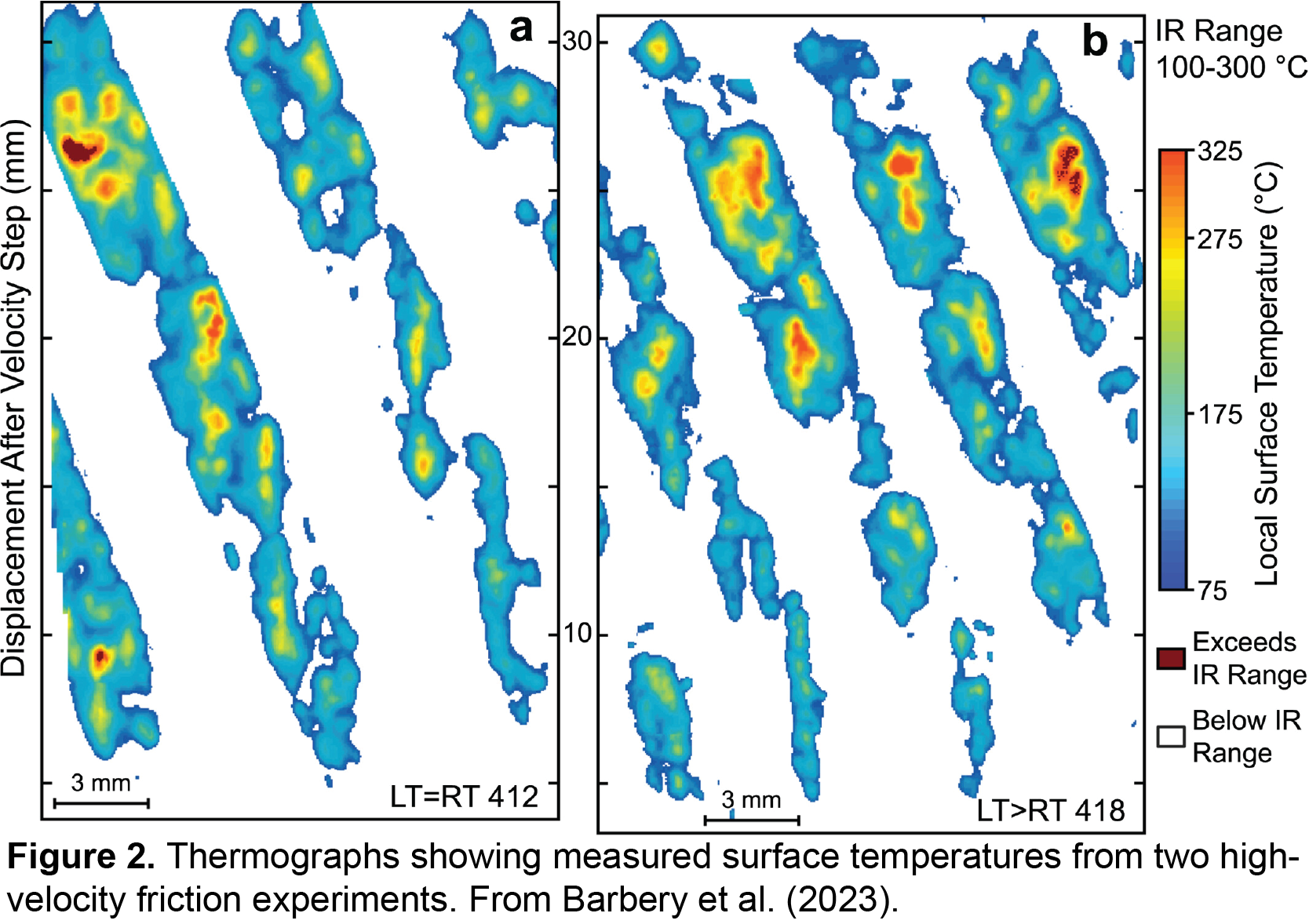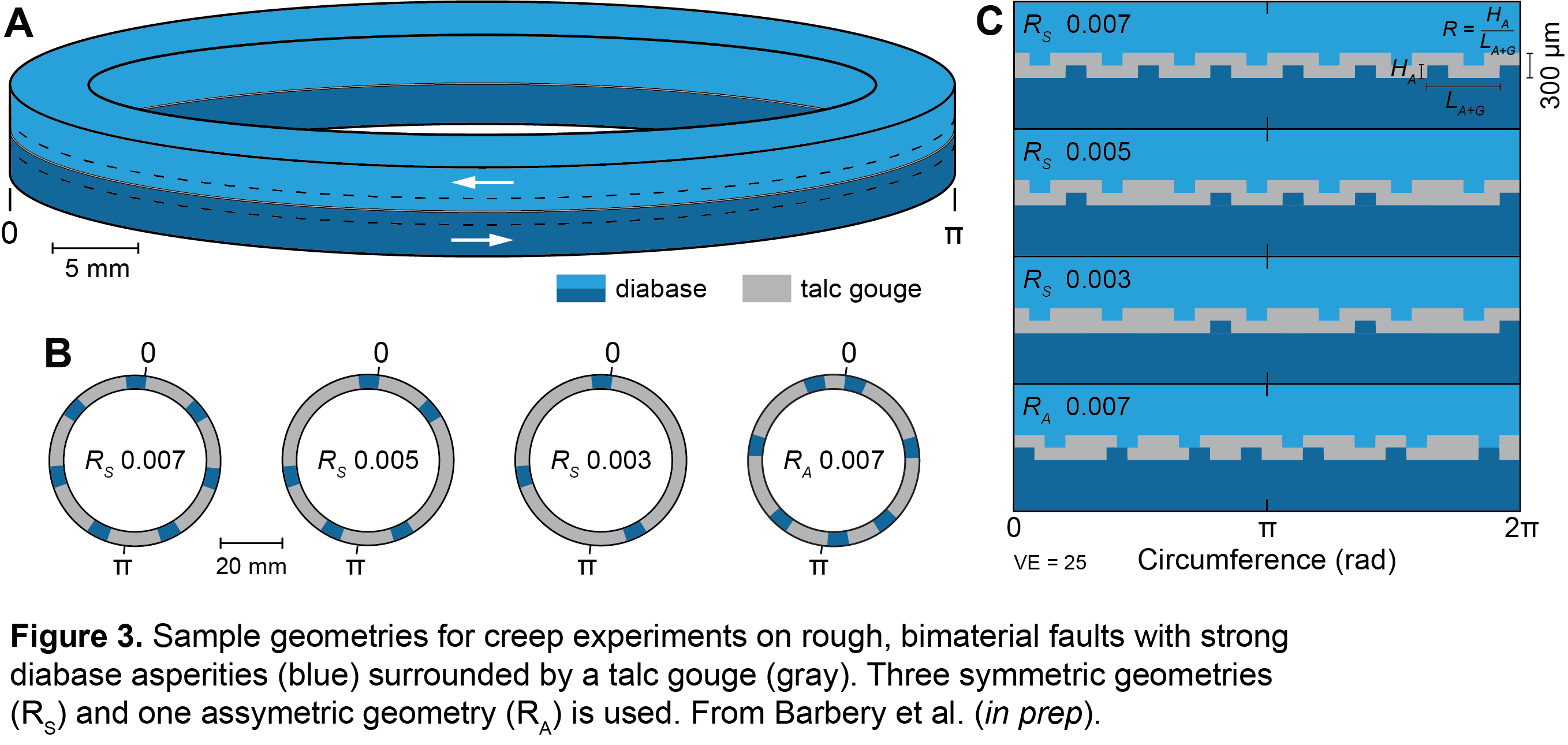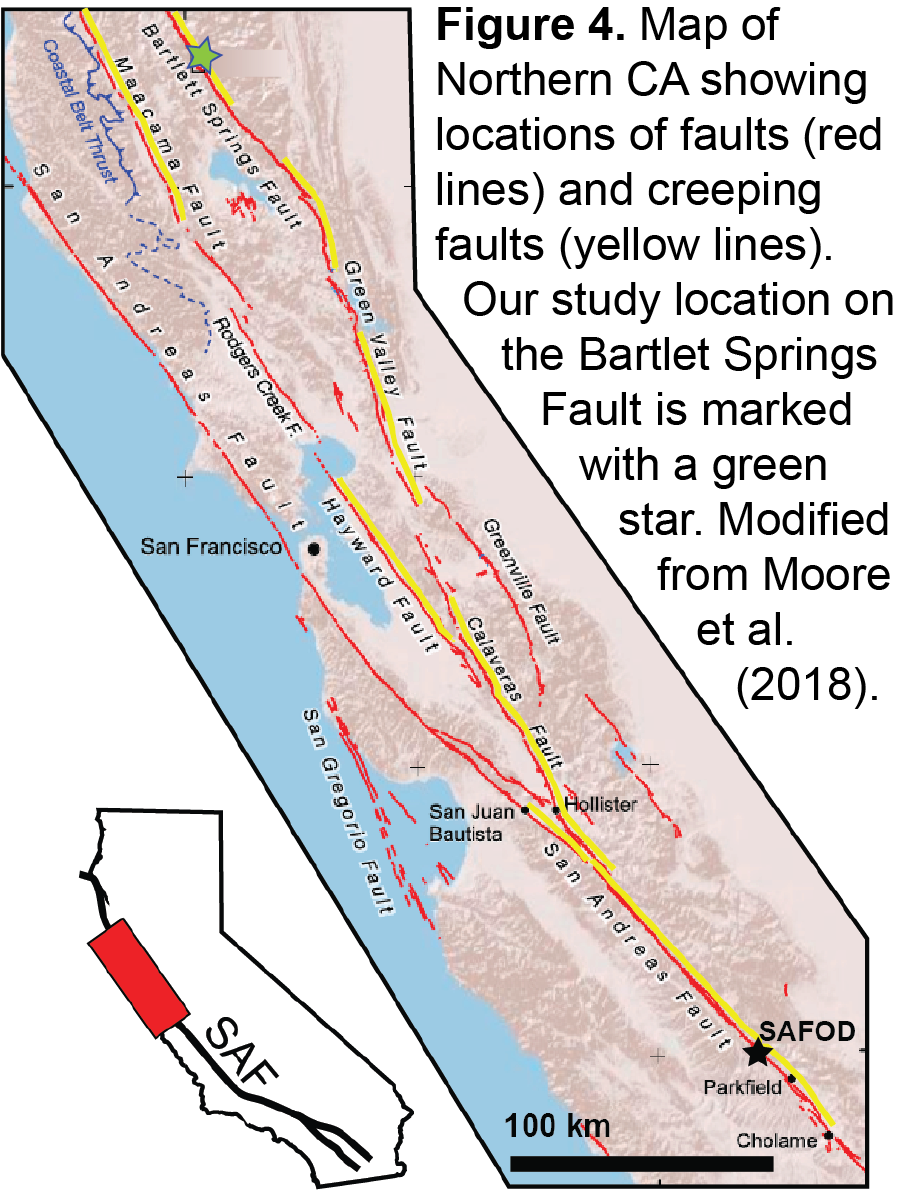Research
Fault slip is a frictional phenomenon where sliding is regulated by frictional properties of the surfaces and slip is resisted by frictional forces between the juxtaposing fault surfaces. Understanding the frictional behavior of rocks, and describing it in physics-based constitutive equations, is necessary to constrain the mechanics of seismic and aseismic fault slip and to advance dynamic rupture models that inform seismic hazard and risk assessments. Direct testing of constitutive relations, however, remains challenging as conditions in the Earth’s crust are difficult to replicate in the lab. My work explores physical processes that contribute to slow and fast earthquakes, fault restrengthening or healing after earthquakes, and the role of heterogeneity, including natural fault roughness, mineralogical variations, and permeabiity variations, on earthquake processes.
Earthquake Physics: Thermal Pressurization
Pore fluids are present along most faults in nature. At sliding rates above 1 mm/s, frictional heat causes thermal expansion of pore fluids which reduces the normal stress on the fault in a process called thermal pore fluid pressurization, or thermal pressurization. As friction is the ratio of shear stress to normal stress, this ultimately weakens the fault and is considered an important mechanism during earthquake nucleation and propagation. However, thermal pressurization may be inhibited when fault roughness is high, as new pore space opens with slip. If enough new pore spaces are opened, pore volume increases due to thermal pressurization can be fully accommodated and the fault can be strengthened in a process called dilatancy hardening. Thermal pressurization may also be inhibited when gouge, a natural wear product of fault slip, is present. A clearer understanding on when and how thermal pressurization may contribute to earthquakes in nature will ultimately inform physics-based dynamic rupture simulations.
To explore the competition between thermal pressurization and dilatancy hardening, collaborators and I have conducted experiments at Brown University using the Tullis Rotary Shear Apparatus on flat and rough sliding surfaces to determine conditions in which thermal pressurization is suppressed. For rough surfaces, weakening (highlighted by green bars in the image above) occurs only 50% of the velocity steps we performed, and after 4x the slip required for weakening on flat faults. This work was supported by NSF award 2052897 (EAR PF, PI Barbery). I have also recently begun experiments exploring thermal pressurization on gouge lined faults and faults with varying permabilities, supported by NSF award 2338973 (EAR Geophysics, PI Barbery).

Earthquake Physics: Flash Heating of Asperities
Faults are naturally rough, and contact occurs at microscopic asperities resulting in a true contact area significantly smaller than the apparent contact area. At elevated sliding velocities, the rate of local heat generation is greater than the rate of heat transport by diffusion, which thermally weakens asperities reducing the fault coefficient of friction. Constitutive equations exist for flash heating, though laboratory data deviates from model predictions at earthquake accelerations.
Using high-speed rock friction experiments in combination with high-speed infrared imagery during sliding, my coauthors and I directly measured the distribution of temperature and normal stress on laboratory faults (Barbery et al., 2021) and developed a multi-scale flash-heating model that incorporated our measured inhomogeneous temperature and stress distributions (Barbery et al., 2023). This work documented significant heterogeneity in surface temperature on nominally homogeneous faults, showed that wear rates evolve dynamically with both displacement and surface temperature, and that wear processes may represent a mechanical work sink in the early stages of seismic slip when wear rates are highest.

Barbery, M. R., Chester, F. M., & Chester, J. S. (2023)
Barbery, M. R., Chester, F. M., & Chester, J. S. (2021)
The Role of Heterogeneity on Earthquake Nucleation
Faults are structurally complex in nature and heterogeneous from the microscopic scale up to the kilometer scale. Two major contributors to fault heterogeneity are fault roughness and on-fault mineralogical variations. There is general consensus that natural fault roughness is mechanically important, though debate remains on whether roughness promotes or suppresses frictional instabilities that can nucleate fast and slow earthquakes. In recent work, collaborators and I conducted experiments on creeping, bimaterial laboratory faults using different roughness geometries. A novel sample geometry enabled an investigation into the effects of roughness and mineralogy on frictional stability and earthquake nucleation by synchronizing asperities, which simultaneously simplified and amplified the mechanical effects of roughness. This work shows that colliding asperities trigger dramatic transitions from stable to unstable sliding along creeping faults and provides a new framework for the nucleation of seismic or aseismic slip events in nature (supported by EAR 2052897, PI Barbery)

Barbery, M. R., Hirth, G., & Tullis, T.E. (2025)
The Role of Fabric on Fault Friction
Earthquake ruptures can sometimes propagate into nominally creeping fault rocks. The San Andreas fault system in northern CA is dominated by creeping faults with abundant clay minerals, but the extent to which clays like serpentinite can host earthquakes is unclear. In this work, collaborators and I are investigating the frictional properties of foliated and altered fault gouges from the Bartlett Springs Fault from the Northern San Andreas fault. We want to understand if and how earthquake ruptures may propagate through these fault rocks. Experiments have been conducted at both Utah State University and Brown University on samples with no initial fabric, laboratory generated fabrics, and natural fabrics. (supported by SCEC 24119, PI Barbery)

